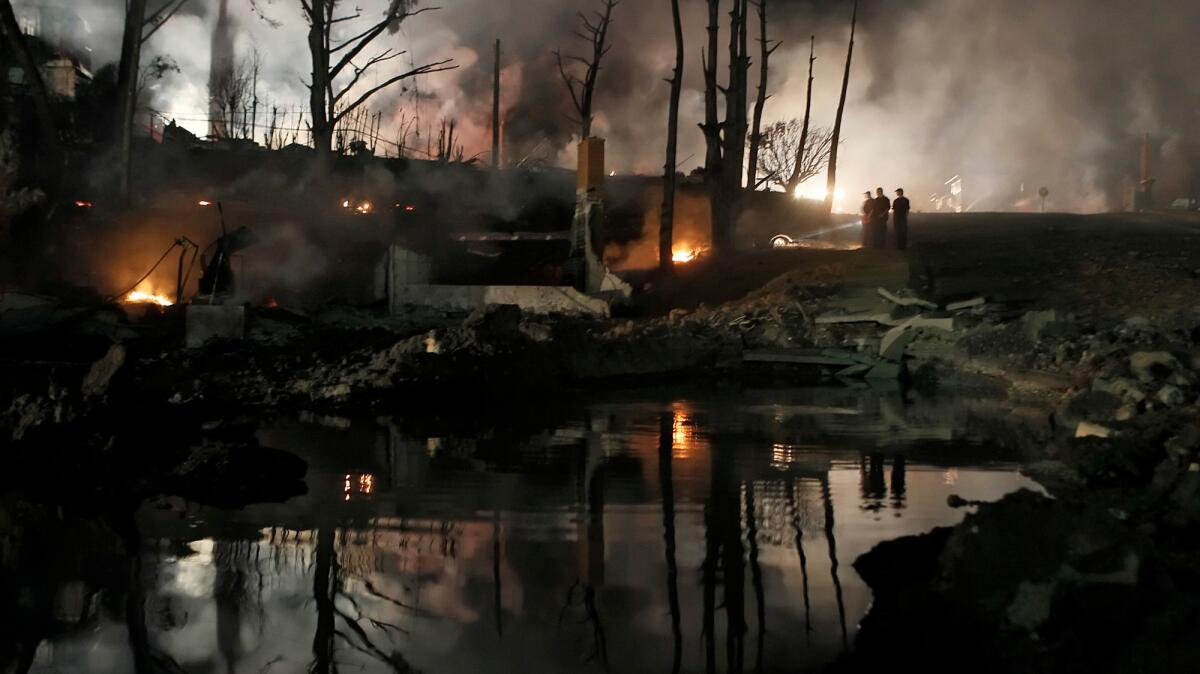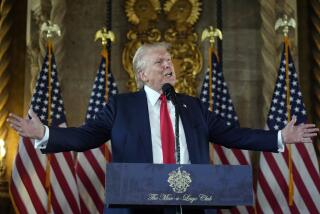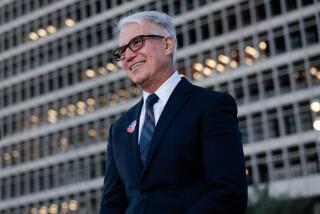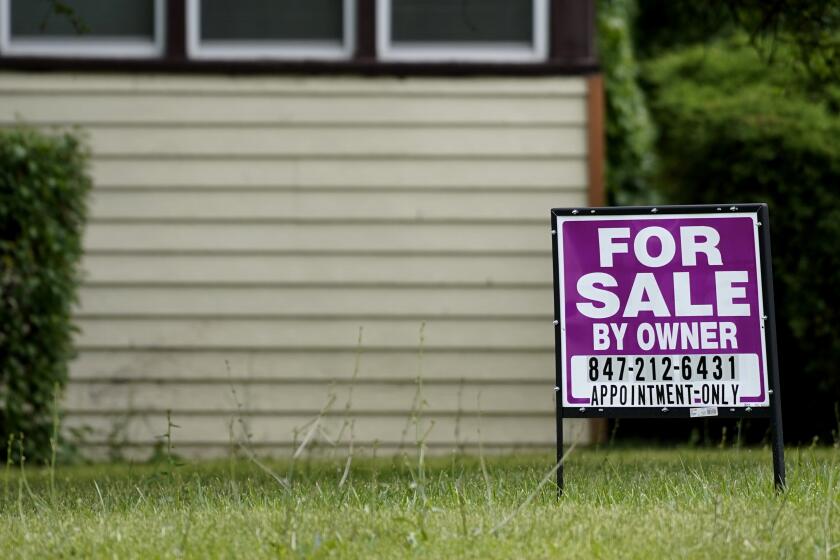Column: White-collar crime: How the feds blundered by indicting PG&E for a fatal gas explosion

- Share via
The government’s penchant in white-collar-crime cases for charging corporations with wrongdoing, rather than the human beings who make the decisions and pocket the proceeds, is a flaw in our justice system that lets wrongdoers off the hook.
How big a flaw just became evident in the criminal case stemming from the 2010 San Bruno gas explosion, in which federal prosecutors indicted Pacific Gas & Electric Co. on 27 counts, but didn’t name a single individual. The explosion in a deteriorated section of pipeline leveled a suburban neighborhood and killed eight.
Now PG&E has thrown that policy right back in the prosecutors’ faces. In his opening statement Friday to the San Francisco federal court jury hearing the case, PG&E lawyer Steven Bauer implied that if the government really had a case, it would have gone after people, not a faceless corporation.
“PG&E, the company, is just — it’s a logo, right?” Bauer told the jury. “It’s easy to snarl at a logo. It’s easy to say PG&E ...it did this, it did that. But it’s much harder to look a person in the eye and say ‘You are a criminal … who made these pipelines unsafe.’ And you notice the government didn’t do that.”
Bauer had followed federal prosecutor Hallie Hoffman, who played into her adversary’s hands in her opening statement by laying blame on the inchoate corporation. “PG&E knew that it needed to keep certain records in order,” she said. “It knew its records were inaccurate. … Instead of a test that it knew would test the integrity of the pipeline … it chose a cheaper test, a deliberate choice.”
It’s easy to snarl at a logo. ... It’s much harder to look a person in the eye and say, ‘You are a criminal.’... And you notice the government didn’t do that.
— PG&E; lawyer Steven Bauer
She continued, “This case is about these deliberate and illegal choices and the coverup of these choices.”
Yet, obviously, a corporation can’t make “deliberate choices,” or decide to cover them up. The deliberations had to have occurred in the mindset of individuals with the corporate responsibility to make them. They had to be aired somehow in meetings among those responsible, and communicated formally to other people. Who are these people? The government doesn’t say.
I’ve reported before on the drawbacks of treating white-collar crime as the handiwork of a faceless corporation while leaving the human decision-makers untouched. The issue comes up most frequently in the context of prosecutions for the mortgage industry meltdown leading to the financial crisis of 2008.
The Department of Justice brought not a single high-level financial executive to criminal court in connection with that disaster, thought it extracted billions of dollars in fines from corporations — that is, from those companies’ shareholders. On Friday, just as the criminal trial was opening against PG&E, the Justice Department was reported to have dropped its civil case against Angelo Mozilo, the former head of Countrywide Financial, the mortgage lender that sat at ground zero of the mortgage disaster. Mozilo already had settled a lawsuit brought by the Securities and Exchange Commission for $67.5 million, but evidently the Justice Department concluded that the difficulties of pursuing him for civil fraud weren’t worth the candle. The agency dropped a criminal investigation of Mozilo in 2011.
The drawbacks of naming only corporations in criminal and civil lawsuits are obvious — so obvious that they were enumerated last year by Deputy Atty. Gen. Sally Yates in a memo explaining why henceforth prosecutors would look for individuals to blame. For one thing, corporate penalties have zero deterrent effect on executives, who seldom pay any monetary price and certainly are inoculated against the penalty that would really make them sit up and take notice: a stretch in prison. They do nothing to change corporate culture, and they undermine public confidence in the justice system and rule of law.
Even penalties that are eye-catching at first glance tend to amount to a relative pittance in context of a big corporation’s financial resources. PG&E, for instance, could be hit with $562 million in fines if the jury finds it guilty on all 13 criminal counts in the San Bruno case. Sounds like a lot. But the company, which has pleaded not guilty, collected nearly $17 billion in revenue last year, and paid out $856 million in dividends; it’s on track to pay out about the same in 2016 dividends.
The Yates memo aimed to signal a change in approach at the Justice Department. Henceforth, it would start with the individual wrongdoers and work up the ladder from there: “Criminal and civil corporate investigations should focus on individuals from the inception,” she ordered, adding that the department would “not release culpable individuals from civil or criminal liability when resolving a matter with a corporation.”
It’s too early to know whether Yates’ new policy will bear fruit. It doesn’t seem to have shaken corporate executives to the core yet. (“The message should not be that the sky is falling,” an attorney at the corporate firm DLA Piper advised colleagues and clients late last year.)
The San Bruno case was filed in 2014, before the Yates memo, and its subject matter is rather different from financial-crisis cases. But the government’s decision to indict the company allowed Bauer, the PG&E lawyer, to paint the decisions that led up to the San Bruno explosion as the product of individual men and women doing their level best to fulfill their responsibilities, over a period of decades. His goal was to diffuse responsibility among thousands of working men and women just like the jurors themselves. Someone, somewhere made the decision or gave the order to choose a less effective pipeline test, or to ignore signs that its records were lousy, but that person or those people aren’t on trial or in the courtroom, because the government chose not to name them.
The only entity on trial is PG&E, and for Bauer it was just as easy to paint the company as a huge enterprise determined to do well as it was for the government to paint it as a lumbering giant determined to cut corners. PG&E company policy, he said, is “safety comes first, compliance comes first … you are going to hear that in testimony from people. Which makes sense, because it’s the engineers’ job to keep it safe.”
But that’s misdirection. Company policies are words, but San Bruno was the result of actions. The most concise statement of this truth comes from C.S. Lewis, as quoted by Mark Kleiman of New York University: “The greatest evil is not now done in those sordid ‘dens of crime’ that Dickens loved to paint. … It is conceived and ordered (moved, seconded, carried, and minuted) in clean, carpeted, warmed and well-lighted offices, by quiet men with white collars and cut fingernails and smooth-shaven cheeks who do not need to raise their voices.” The government took the easy way out in the San Bruno indictment. Even if the company is found guilty, the quiet men who run it can continue to do their damage, quietly.
Keep up to date with Michael Hiltzik. Follow @hiltzikm on Twitter, see his Facebook page, or email [email protected].
MORE FROM BUSINESS
Stocks surge as investors grow hopeful about ‘Brexit’ vote
China’s box office is booming, but will VR crash the party?
Obama to announce L.A.-based hub to create factory sensors
More to Read
Inside the business of entertainment
The Wide Shot brings you news, analysis and insights on everything from streaming wars to production — and what it all means for the future.
You may occasionally receive promotional content from the Los Angeles Times.











